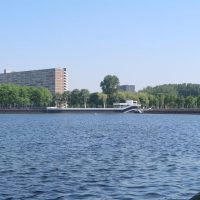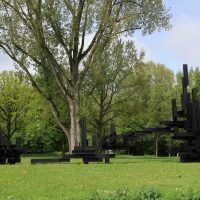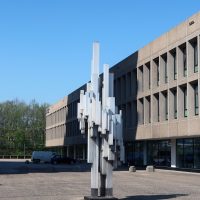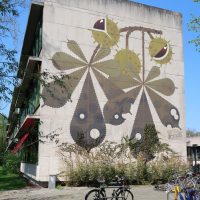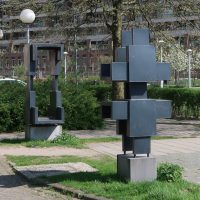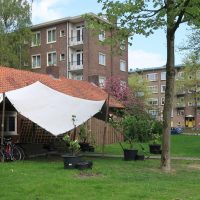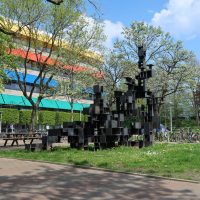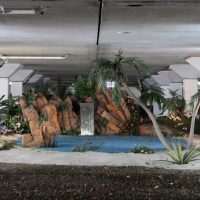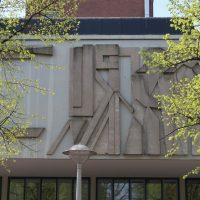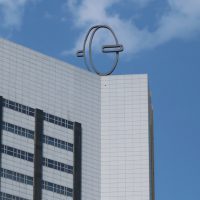Art tour Amsterdam West, 2018
By Willem Sjoerd van Vliet
The beltway: a highway encircling the city, as if buckled around the waist. A peculiar term, as it implies that the road could be tightened or loosened if needed, which actually would be quite convenient for a bloated city like Amsterdam. The A10 cannot be loosened, even though for a neighbourhood like Bos en Lommer that would be a relief: the beltway cuts the area in two. Typically, Amsterdam-West’s city office is built like an arch over the highway, traffic rushing underneath it, like an unbiased building that does not distinguish between the centre and the periphery.
By the end of the 1920s, the architect and urban planner Cornelis van Eesteren foresaw the enormous expansion of Amsterdam which resulted in his General Extension Plan, dating from 1935. Building work began in the 1930s but, interrupted by the war, Bos en Lommer wasn’t completed until the 1950s. By then, Amsterdam was a rapidly growing metropolis and in desperate need of a beltway. In 1962 the construction of what would later become the A10 was started.
This route will cross the belt several times. It will stop by artworks inside of, outside of and even under the beltway. Outside often means excluded. This is not at all the case on this route, which becomes evident for example at the very end when we arrive at Sloterplas, where the Van Eesteren Musem is, surrounded by light and space and the wild blue yonder.
As a guide I looked at these outside artworks from a personal perspective. Besides the permanent outside art on both sides of the beltway I concentrate on community projects which do more than enliven the neighbourhood. At every stop you will see: set one step aside and a new perspective unfolds. I highly suggest everyone to do exactly that.
Willem Sjoerd van Vliet
